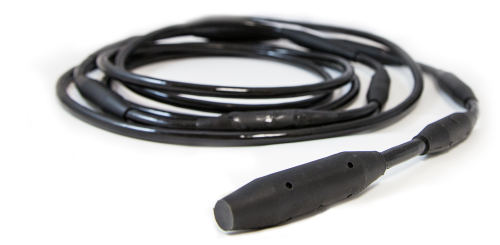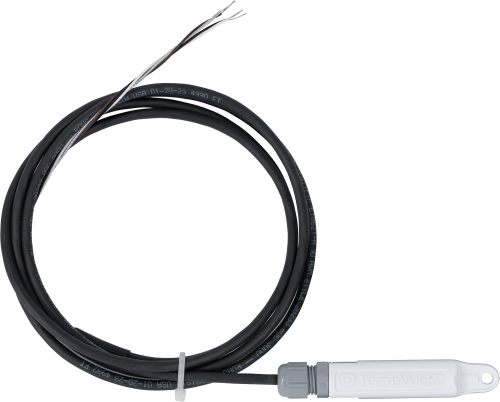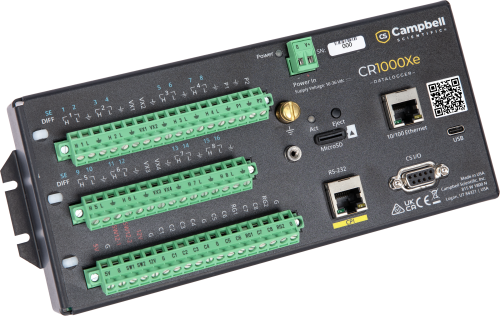Instrumentation
We offer a variety of products that can be used to create systems for Aquaculture. Many of the major components used to create these systems are listed below. Please let us know if we can help you configure a system.
More Details about Our Aquaculture Systems
Continuous System Monitoring
Our systems monitor and record water quality around the clock providing continuous data that can be used to identify trends and improve production. Almost any sensor can be used, including dissolved oxygen, temperature, pH, conductivity, salinity, turbidity, ORP, ammonia, flow, and level. Sensors can measure and store data at any interval you choose. Through the use of mathematical algorithms, you can store processed data in the units of your choice, simplifying data analysis.
Automated Control
Aerators, pumps, alarms, or other electrical devices can be controlled based on measured conditions or time. For example, aerators can be turned on (day or night) when DO measurements reach a preset value. Together with continuous monitoring, automated control keeps your system operating efficiently even when you are not around.
Communications
The availability of multiple communications options for transmitting data to the central computer also allows systems to be customized to meet exact needs. Options include radio, telephone, cell phone, voice-synthesized phone, satellite, and Ethernet. Systems can be programmed to send alarms or report site conditions by calling out to a computer, phones, radios, and/or pagers.
System Reliability
Our measurement and control units have proven their reliability in thousands of applications in climates worldwide making precise, reliable measurements on a wide variety of sensors. Since rechargeable batteries are used as a power source, systems can continue to measure and store time-stamped data and control on-site generators and other devices during power outages.
Pond Measurements
In ponds, our systems typically monitor dissolved oxygen and temperature. Amps or RPMs can also be monitored on motors to aid in detecting aerator failures. In a pond monitoring system, a CR1000 measurement and control unit (or other unit), housed in an environmental enclosure, measures sensors and controls aerators based on preset times or based on the concentration of dissolved oxygen, as measured by the sensors. Alarms are sent via pager, radio, or phone when oxygen levels reach preset danger levels or when amp or RPM sensors indicate aerator failure.
Recirculating Operations
A CR1000 (or other control unit) monitors dissolved oxygen, pH, temperature, flow, level, and other sensors. Based on those measurements (or preset times) valves, pumps, chemical injectors, aerators, and other devices are controlled to maintain appropriate water quality and quantity for the aquaculture operation. The control unit, its power supply, and communication devices are housed in an enclosure. Data is transmitted to the central computer for analysis. Status of the recirculating system can be monitored from the central computer.
Case Studies
Steve Rodgers is the lab manager at the Aquaculture Research Center of the Institute of......read more
Steve Rodgers is the lab manager at the Aquaculture Research Center of the Institute of......read more
Moving clean, cold water through a trout-rearing facility is essential to its success. A live......read more
The Norwegian company ITAS (Scanmatic Instrument Technology AS), started as part of the Research Council......read more
In August 1996, Stolt Sea Farm (www.stoltseafarm.com) installed a Campbell Scientific monitoring and control system at......read more
Successful aquaculture ultimately hinges on concentrations of dissolved oxygen. Measurement of DO is the single......read more
Documents
Brochures
Frequently Asked Questions
Number of FAQs related to Aquaculture: 3
Expand AllCollapse All
-
Yes. Campbell Scientific monitoring and control systems are used in many applications. They can be programmed to monitor and control any application.
-
Because each farm is unique in its configuration, each system is designed to meet the needs of the farm. Contact Campbell Scientific to develop a customized solution. We can also recommend very capable system integrators to handle the installation of a system.
-
Oxygen is controlled in water by forcing oxygen into the water. There are typically three ways to accomplish this:
- Place a paddle-wheel type device that mixes the water so that more water comes into contact with the air. This process is used in open pond systems. This can only increase the amount of dissolved oxygen in the water to be in equilibrium with the atmosphere.
- Force pressurized air (or pure oxygen) into the water with diffusers.
- Allow the water to free fall through the air. This process releases any over-saturated gases and increases the surface area of the water so that more dissolved oxygen in the area can be exposed to the water. Control the mechanical equipment that forces more oxygen into the water. In open ponds, this is traditionally done by turning on paddle-wheel aerators. In closed re-circulating tank systems, this is done by turning on additional aerator pumps.
Privacy Policy Update
We've updated our privacy policy. Learn More
Customise a System
In addition to our standard systems available, many of the systems we provide are customised. Tell us what you need, and we’ll help you configure a system that meets your exact needs.












